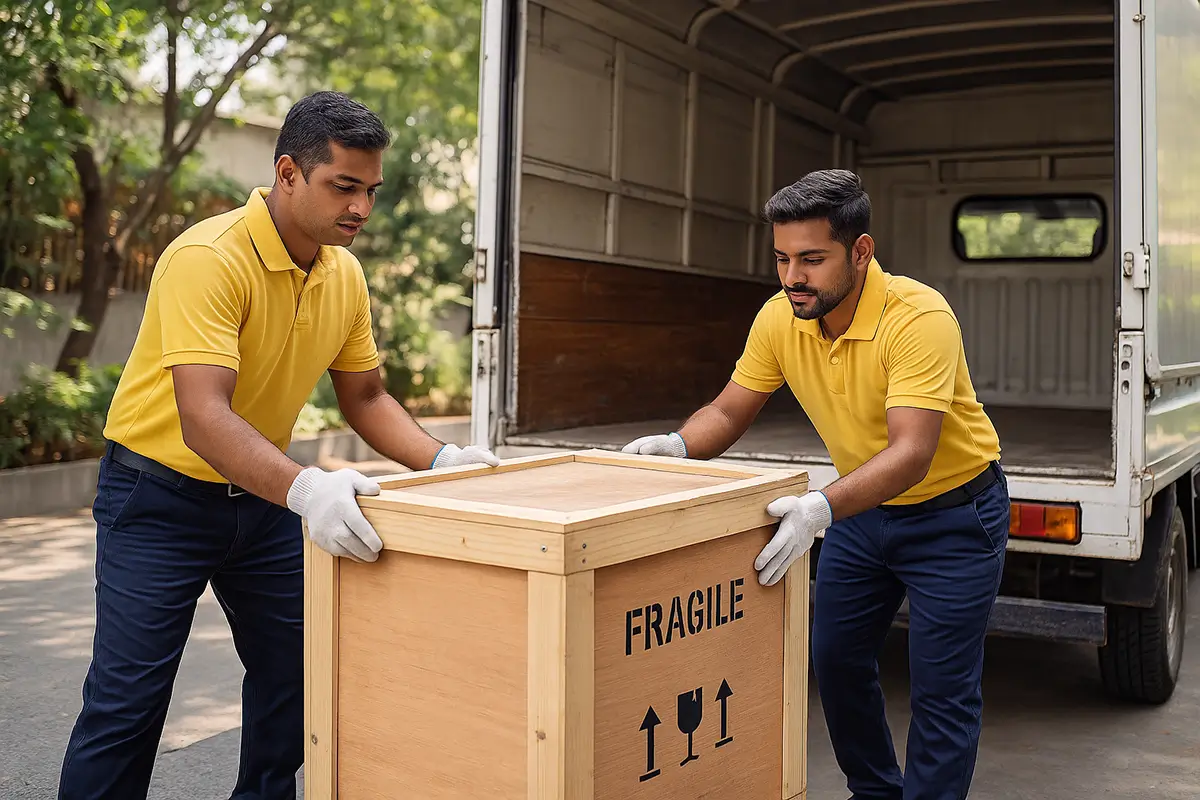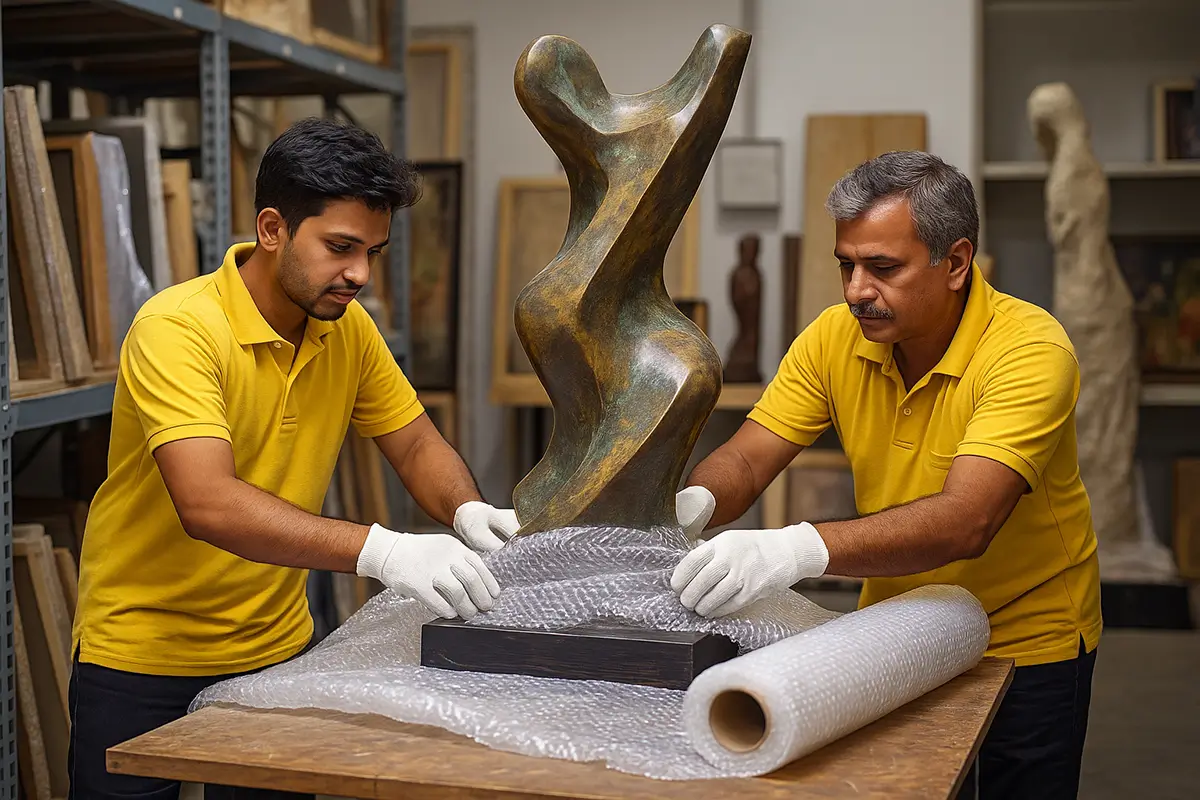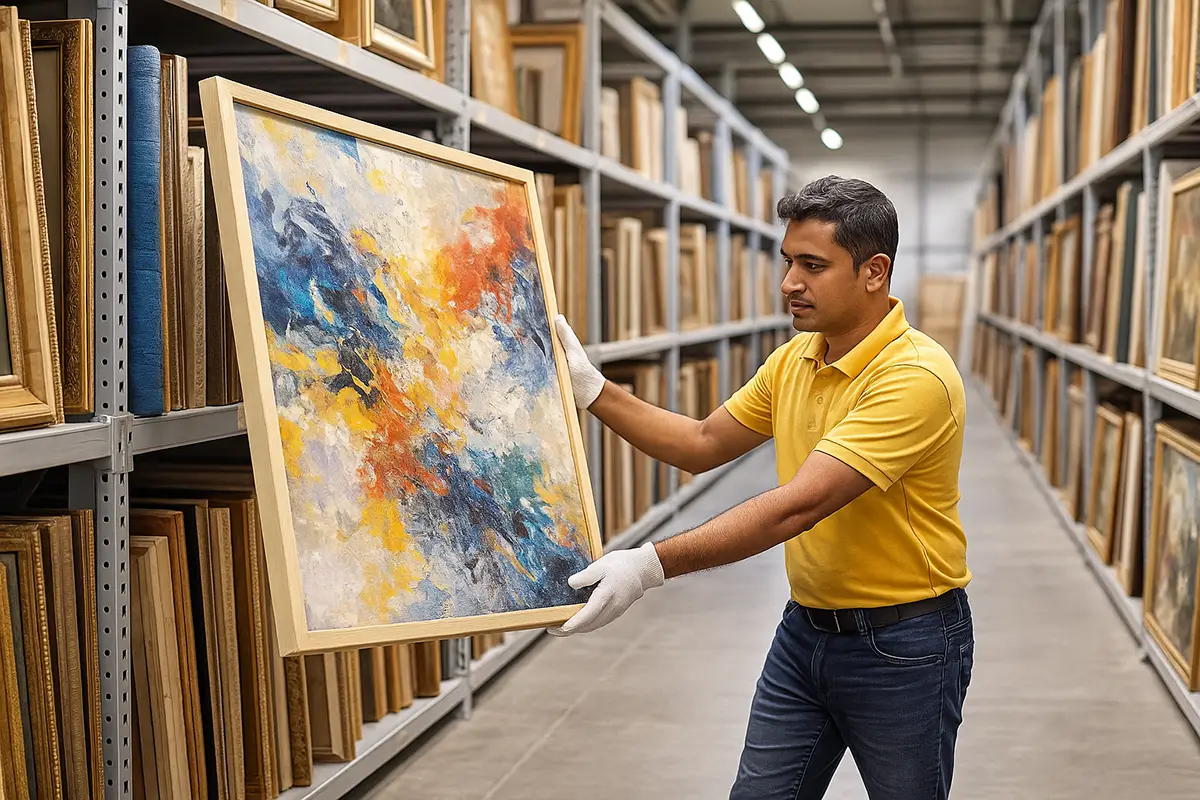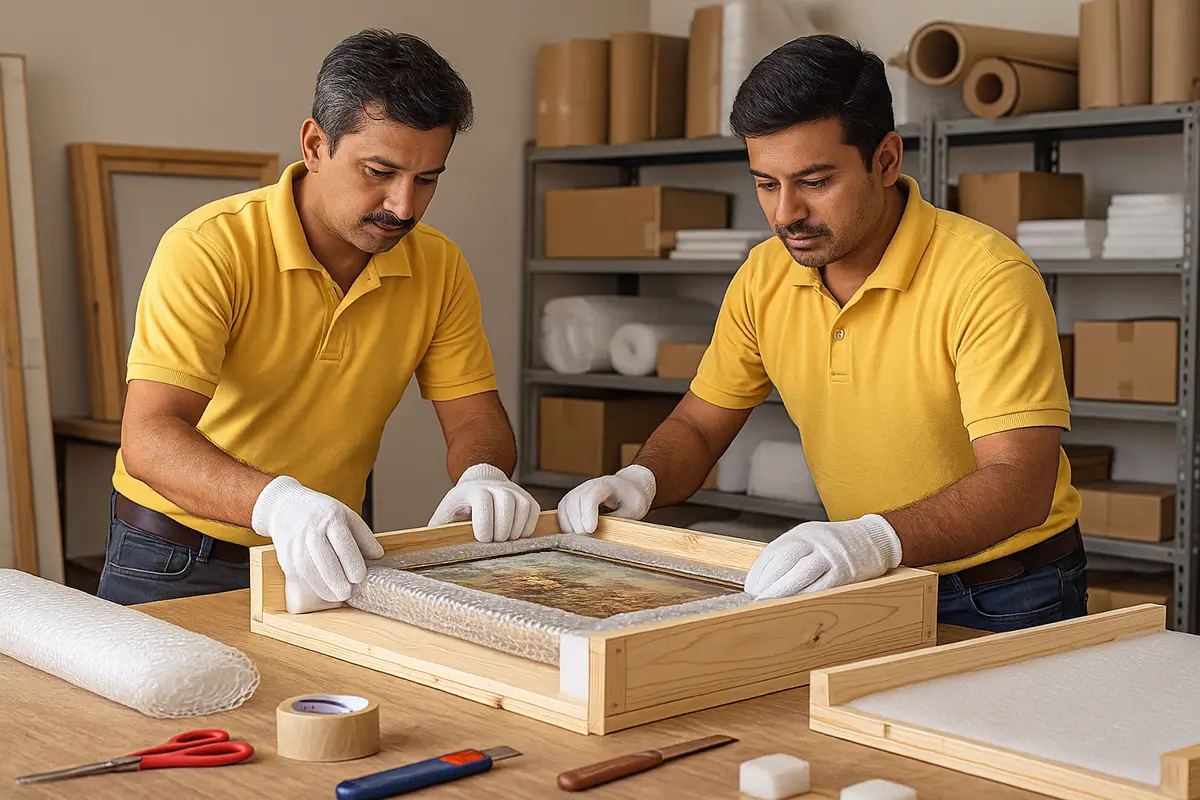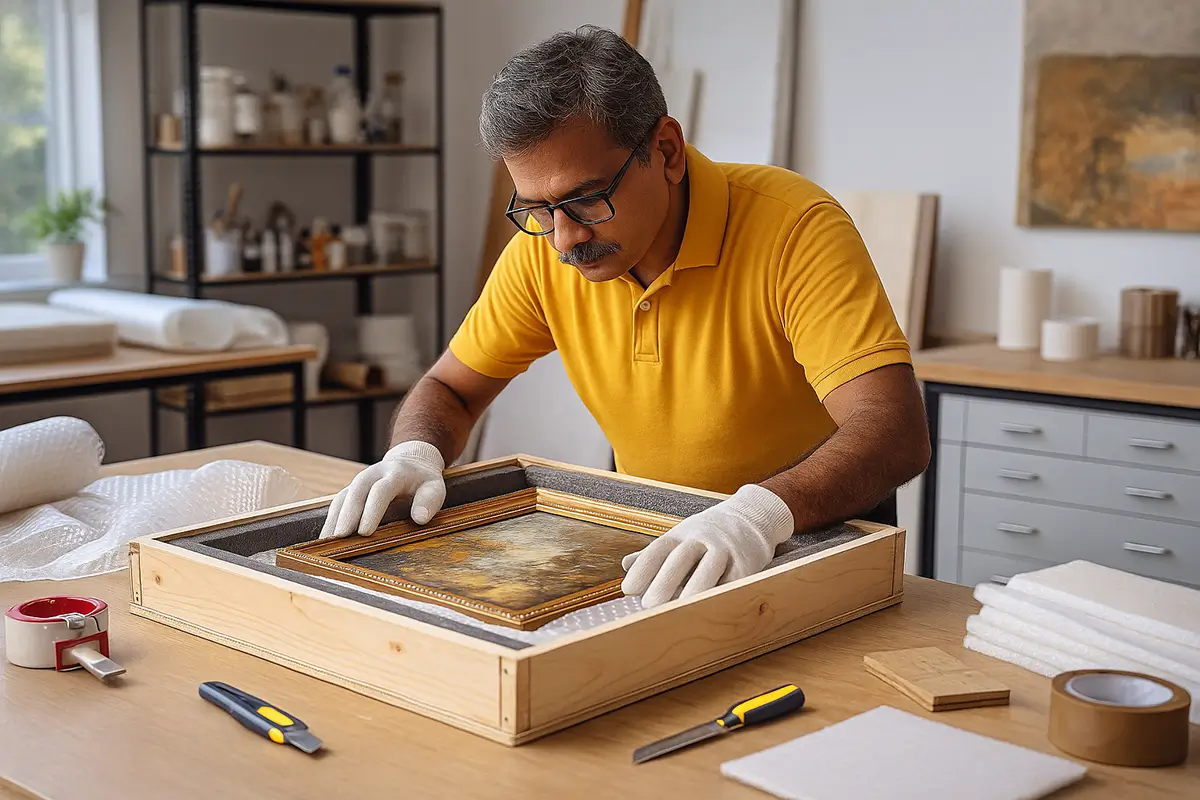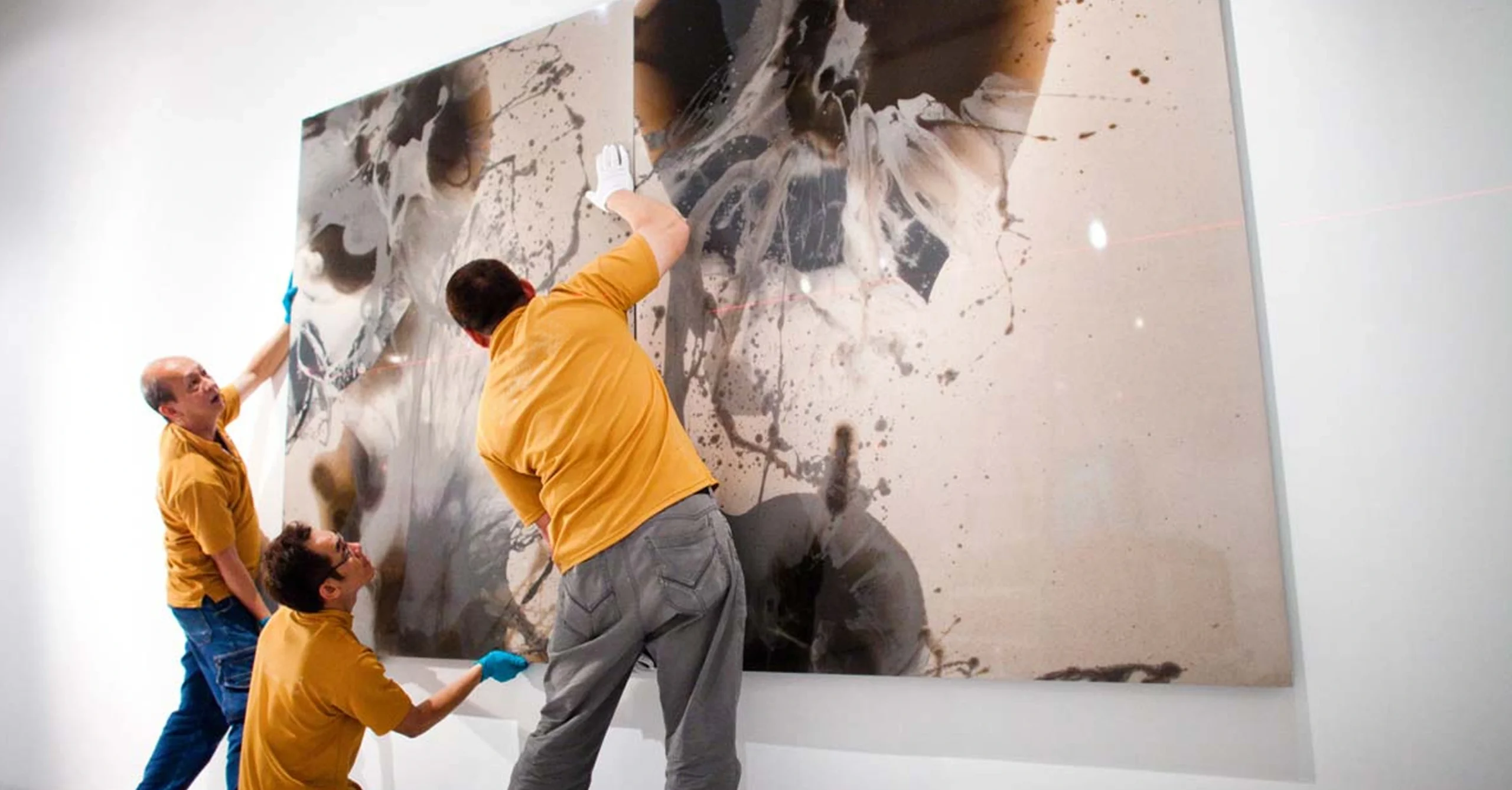Introduction: The unseen safety net of art movement
When a painting leaves a gallery for an exhibition, or when a corporate relocates its office with an art collection, the focus often falls on packing, vehicles, and handlers. But what ensures financial safety if something goes wrong?
That safety net is built on two pillars: insurance and documentation.
Insurance alone is not enough—without condition reports, valuations, and provenance records, claims often fail. Documentation without insurance also leaves collectors exposed to financial risk. Together, however, insurance and documentation protect artworks both as cultural assets and as financial investments.
This article explores why the two must always work together in art logistics, especially in India, and how collectors, corporates, and institutions can safeguard their collections.
Why art insurance is critical in logistics
Unlike ordinary objects, art carries high financial and cultural value. A single painting can be worth more than an entire shipment of furniture. Yet unlike financial assets, art cannot be replaced identically—it is non-fungible.
Insurance covers:
- Accidental damage: Breakage, scratches, tears during handling.
- Environmental damage: Heat, humidity, water seepage.
- Theft or loss: In transit or during storage.
- Force majeure: Events like fire, floods, or riots (policy-specific).
Without insurance:
A damaged work is both a cultural loss and a financial liability. Restoration costs may exceed budgets, and market value may decline permanently.
Documentation: The backbone of protection
Insurance is only as good as the documents supporting it. Without condition reports, provenance, and valuations, claims are difficult to prove.
Key documents include:
- Condition reports: Baseline record of an artwork’s state before movement.
- Valuation certificates: Establish replacement value for insurance coverage.
- Provenance records: Authenticate ownership and legitimacy.
- Transport records: Dates, handlers, and environmental logs.
Together, these documents provide legal and financial defensibility.
How insurance and documentation work together
Think of insurance as the policy and documentation as the evidence. One without the other weakens protection.
- Insurance + Valuation: Ensures claim amounts reflect market replacement value.
- Insurance + Condition Reports: Establishes whether damage occurred during transit or existed before.
- Insurance + Provenance: Validates ownership for claim settlement.
- Insurance + Transport Logs: Proves chain of custody in case of theft or dispute.
In short: Appropriately and expertly done art valuation strengthens insurance, while insurance monetises the protection that documentation provides.
The Indian context: Challenges and gaps
India’s art logistics sector faces unique hurdles:
1. Underinsurance
Collectors often underestimate artwork values or skip insurance to save costs.
2. Lack of documentation
Family collections, especially inherited works, may lack invoices or provenance.
3. Informal logistics
General movers are often used for art, without proper records.
4. Regulatory scrutiny
Customs and tax authorities require documentation for cross-border shipments. Without it, delays and penalties arise.
These challenges make the integration of insurance and documentation even more vital in India.
Step-by-step: Building insurance and documentation into logistics
Step 1: Pre-transport valuation
- Commission a professional valuation report.
- Establish fair market and replacement values.
Step 2: Condition reporting
- Document artwork with high-resolution photographs.
- Note any existing cracks, tears, or wear.
Step 3: Insurance policy selection
- Choose transit insurance covering all stages: packing, storage, road/air transport.
- Ensure coverage for force majeure, not just accidents.
Step 4: Documentation of handlers
- Record who packed, who transported, and under what conditions.
- Use climate logs and GPS trackers when possible.
Step 5: Arrival documentation
- Re-assess condition at destination.
- Update insurance files with post-transport reports.
This cycle creates a closed loop of accountability.
Case examples: When insurance and documentation made the difference
Case 1: Corporate relocation in Bengaluru
A financial institution relocated with 120 artworks. During transport, one painting’s frame was cracked.
- Condition reports confirmed the damage was new.
- Valuation established replacement cost.
- Insurance settled full restoration expenses.
Case 2: International loan from Delhi to Paris
A museum loaned works abroad. Customs required provenance and valuations to clear the shipment.
- Documentation ensured seamless clearance.
- Insurance provided cover for the return journey.
Case 3: Private collector in Hyderabad
Without documentation, a damaged artwork claim was rejected by the insurer. After instituting professional valuation and cataloging, future shipments were fully protected.
Types of insurance relevant for art logistics
- Transit insurance: Covers works while being moved.
- All-risk insurance: Comprehensive coverage including theft, fire, and natural disasters.
- Exhibition insurance: Covers works while on loan to galleries/museums.
- Corporate collection insurance: For companies with permanent collections.
Note: Premiums depend on value, risk profile, and documentation quality.
The role of professional services
Specialised providers such as Art Logistics Services handle both insurance and documentation. Their expertise ensures:
- Accurate replacement valuations.
- Condition reporting with conservation input.
- Insurance coverage tailored to risk.
- End-to-end documentation for customs and compliance.
Collectors and corporates gain peace of mind and defensibility when claims arise.
Best practices for collectors and institutions
- Never transport without insurance.
- Always update valuations before a major move.
- Digitise documentation for easy retrieval.
- Use professional condition reports, not casual photographs.
- Bundle insurance and logistics under one provider for seamless coordination.
Future trends: Insurance and documentation in the digital era
- Blockchain provenance: Immutable records to prevent forgery.
- IoT sensors: Real-time environmental logs tied to insurance policies.
- AI valuation tools: Market analytics for dynamic replacement values.
- Integrated digital platforms: End-to-end insurance + documentation in one dashboard.
These innovations will transform art logistics from a reactive to a proactive discipline.
Conclusion: Protection through preparation
Art moves often—between studios, homes, offices, galleries, and museums. Each journey is filled with risk. But when insurance and documentation go hand in hand, those risks become manageable.
For Indian collectors and corporates, the lesson is clear: don’t treat insurance as an afterthought or documentation as optional. Together, they form the foundation of professional art logistics.
Learn more about our Art Logistics Services. At TurmericEarth, we combine insurance facilitation with rigorous documentation—valuations, condition reports, provenance checks—to ensure artworks are protected financially and culturally every step of the way.



